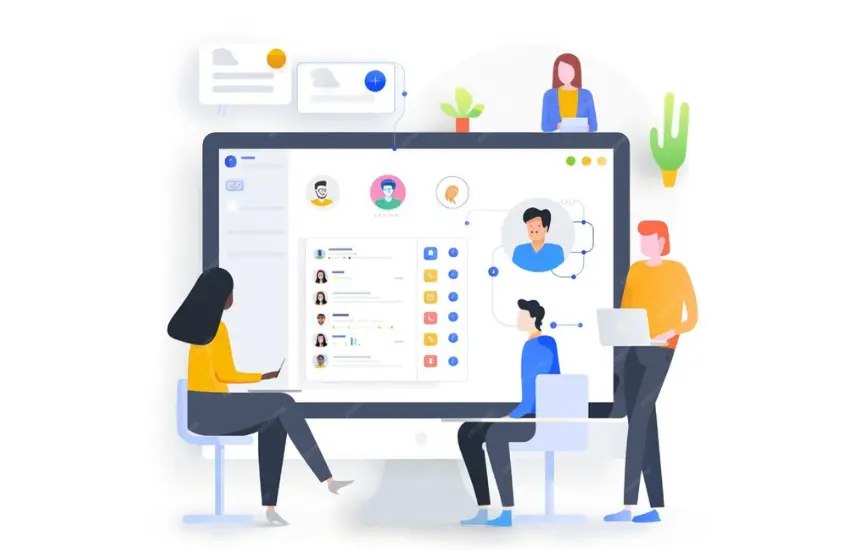Employee Attendance Software: Everything You Need to Know
Employee attendance software is a digital solution designed to monitor, track, and manage employee working hours, attendance, leaves, and time-offs. It replaces traditional attendance methods such as manual registers or punch cards with automated tools, improving efficiency and accuracy in workforce management.
These systems are used across various industries and organization sizes, providing real-time insights into employee availability, productivity, and compliance with organizational policies. From biometric systems and mobile apps to cloud-based platforms with GPS tracking, attendance software has evolved to meet the needs of modern workplaces.

Why Employee Attendance Software Matters Today
In today’s fast-paced work environment, especially with the rise of remote and hybrid work models, managing employee attendance has become more complex and vital. Below are some of the key reasons why businesses are increasingly adopting attendance tracking tools:
-
Improved Accuracy: Eliminates errors from manual entry.
-
Time Efficiency: Automates repetitive HR tasks.
-
Policy Compliance: Ensures adherence to labor laws and internal guidelines.
-
Payroll Integration: Links time records with payroll systems to ensure accurate salary calculations.
-
Remote Monitoring: Helps track attendance of remote teams using geolocation and virtual check-ins.
Who Benefits from Attendance Software?
-
HR Departments: Reduce administrative burden and access data instantly.
-
Managers: Monitor team presence and productivity.
-
Employees: Gain transparency in working hours and leave balances.
-
Business Owners: Prevent time theft and boost operational efficiency.
Recent Trends and Updates (2024–2025)
Over the past year, the attendance software landscape has evolved significantly to address the needs of a changing workforce. Here are some notable trends and updates:
| Trend/Update | Description |
|---|---|
| AI-Powered Analytics | New AI tools are being integrated to forecast absenteeism and optimize workforce scheduling. |
| Integration with Remote Tools | Platforms like Slack, Microsoft Teams, and Zoom are now compatible with many attendance systems. |
| Biometric Advancements | Facial recognition and fingerprint scanning have become more precise, ensuring secure authentication. |
| Compliance Enhancements | Software is now better aligned with GDPR and data privacy regulations, offering more control over personal data. |
| Mobile Accessibility | Most platforms now offer mobile apps with GPS tracking and push notifications for clock-ins and leave requests. |
Laws and Policies Affecting Attendance Software
Legal compliance is a crucial aspect of implementing employee attendance software. Organizations must ensure their systems align with both local labor laws and international standards. Here’s a look at how laws impact attendance tracking in some countries:
| Country | Key Regulation |
|---|---|
| India | Shops and Establishments Act mandates record-keeping of employee hours and leave entitlements. |
| USA | The Fair Labor Standards Act (FLSA) governs overtime pay and attendance recording for non-exempt workers. |
| UK | Employers must comply with the Working Time Regulations 1998, ensuring employees don’t exceed 48 hours/week without consent. |
| EU (GDPR) | Any attendance software must secure and limit access to personal employee data. |
| Australia | The Fair Work Act 2009 requires accurate timekeeping for all employee types. |
Helpful Tools and Resources
Several reliable tools and platforms offer attendance tracking with various features, from basic time logging to advanced analytics. Here’s a breakdown:
| Tool | Features | Suitable For |
|---|---|---|
| Zoho People | Time tracking, leave management, integrations with payroll | SMEs to large enterprises |
| Keka HR | Biometric integration, shift scheduling, mobile attendance | Growing businesses in India |
| BambooHR | Time-off tracking, employee self-service, performance tracking | Remote and hybrid teams |
| Clockify | Time tracking, productivity analysis, Chrome extension | Freelancers and small teams |
| QuickBooks Time (formerly TSheets) | GPS-based mobile tracking, real-time alerts | Field workers and mobile teams |
Templates and Calculators
-
Excel Attendance Templates: Simple monthly sheets for smaller teams.
-
Work Hours Calculator: Helps calculate total work hours, overtime, and breaks.
-
Leave Balance Tracker: Monitors leaves against company policies.
-
Attendance Policy Template: A customizable document that outlines attendance rules and expectations.
These tools are often free or included as part of broader HR platforms, making them accessible even to startups or small businesses.
Frequently Asked Questions (FAQs)
1. What is the difference between time tracking and attendance tracking?
Time tracking measures how much time an employee spends on specific tasks or projects, while attendance tracking records when employees check in and out of work. Many software solutions offer both features in one platform.
2. Is it legal to track employee location using attendance apps?
Yes, but it depends on local laws. Employers must inform employees and obtain consent where required. In countries under GDPR, for instance, tracking must have a lawful basis and comply with privacy principles.
3. Can attendance software help with payroll processing?
Absolutely. Most attendance software integrates with payroll systems, automatically calculating payable hours, overtime, and leave deductions. This reduces payroll errors and administrative work.
4. Do remote employees need attendance tracking?
Yes. Remote attendance tracking helps ensure accountability, manage workloads, and comply with labor laws related to work hours and rest breaks. Tools with flexible login systems (web, mobile, IP-restricted) are ideal for remote teams.
5. How do I choose the right employee attendance software for my organization?
Consider the size of your workforce, work model (on-site, hybrid, remote), required features (biometrics, mobile apps, analytics), and budget. Always look for tools that offer compliance support and data security features.
Conclusion
Employee attendance software plays a vital role in modern workforce management, helping businesses stay efficient, compliant, and transparent. As work models diversify and labor laws evolve, organizations must adapt with smart, automated systems that meet operational and legal needs. Whether you run a small office or a multinational company, implementing the right attendance software can save time, reduce errors, and improve overall productivity—without compromising employee trust or data privacy.